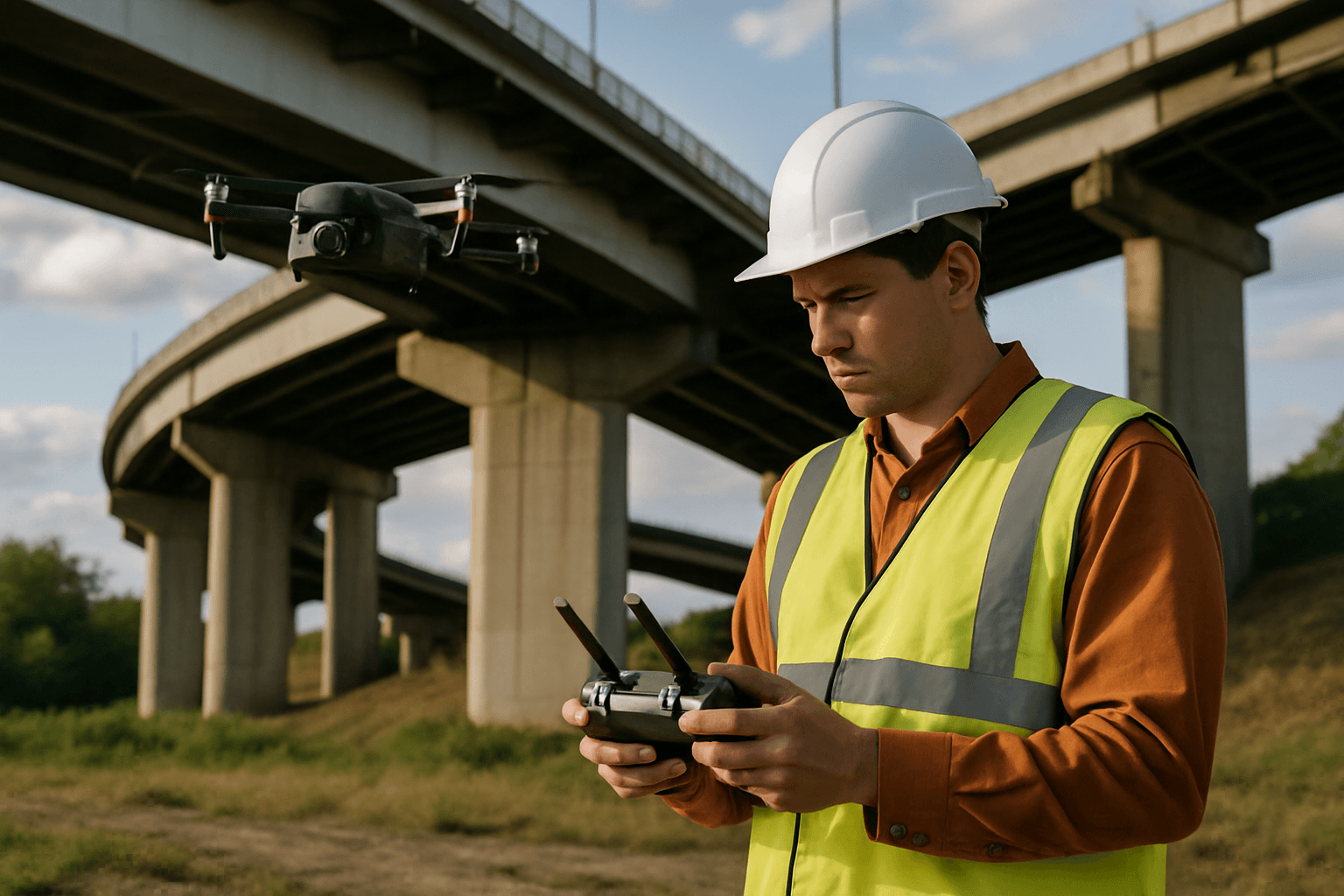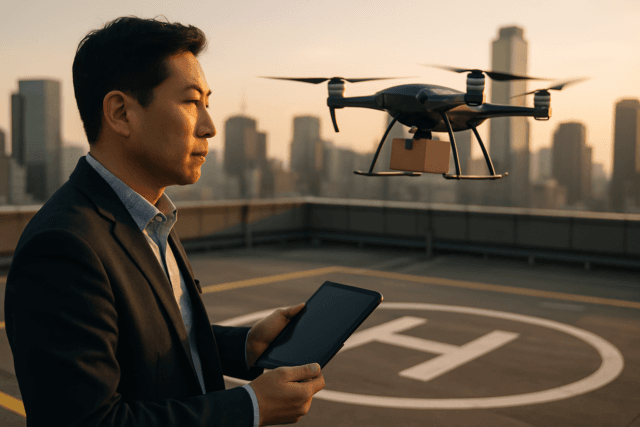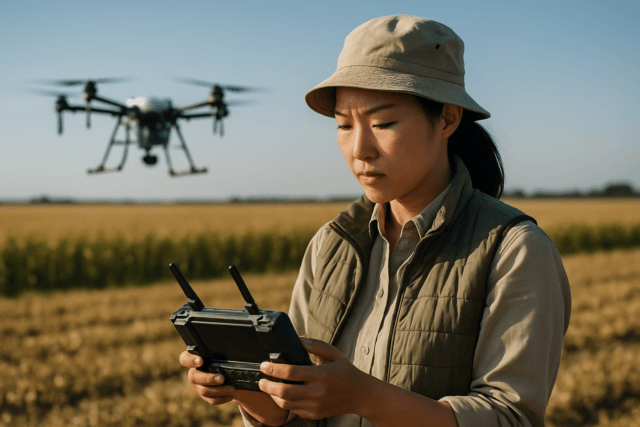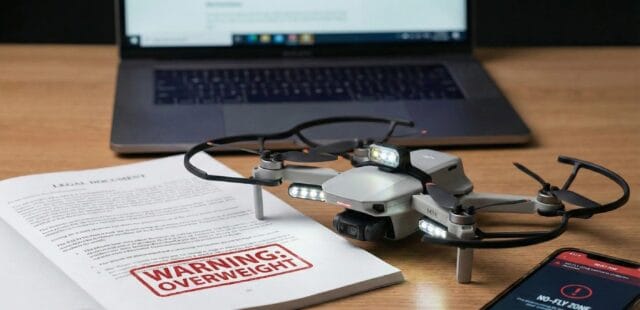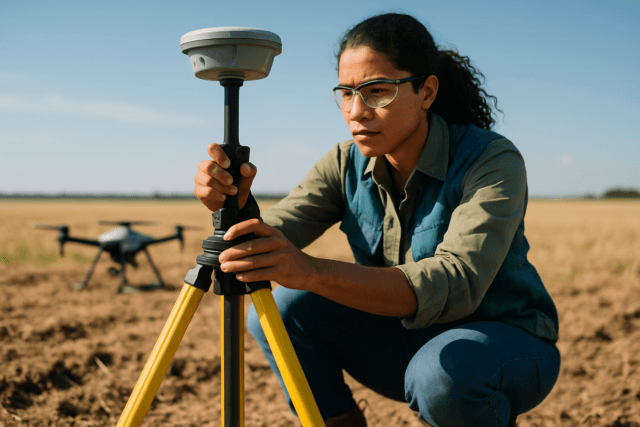Drones have emerged as a transformative technology, offering unprecedented cost savings across various industries. From agriculture and construction to logistics and security, businesses are increasingly leveraging drones to optimize operations, reduce expenses, and gain a competitive edge. This article explores how drones are revolutionizing industries and delivering significant cost savings.
Drone Cost Savings Across Industries
1. Construction
The construction industry is consistently looking for ways to optimize and cut costs, and drones present a significant opportunity. A remarkable 92% of construction firms using drones have witnessed a return on investment (ROI) within one year, highlighting the immediate and consistent dividends they offer.
How Drones Save Construction Companies Money
- Increased Worker Safety: Construction sites can be hazardous. Drones can perform risky tasks such as surveying roofs or high areas of buildings, reducing the risk of work-related fatalities and injuries.
- Simplified Land Surveying: Traditional land surveying is time-consuming and labor-intensive. Drones can accomplish the same task in a fraction of the time with less manpower, providing ultra-high-definition imagery that reveals crucial information about the land’s topography.
- Estimates Made Easy: Drones revolutionize the estimation process by quickly capturing aerial shots and mapping land, providing high-quality photos for reference and accurate measurements, reducing human error and ensuring more profitable jobs.
- Effective Marketing Tools: Drones provide high-quality marketing content at a modest cost, capturing aerial shots of construction sites and surrounding areas in 4K ultra HD quality, offering angles that no other method can.
- Reduced Project Monitoring Costs: Drones can reduce project monitoring costs by up to 55%, enabling faster progress tracking and immediate adjustments.
- Inventory Management: Drones streamline inventory management by providing real-time monitoring of on-site materials and equipment, ensuring accurate stock levels and preventing shortages or overstocking.
2. Agriculture
Drones are revolutionizing farming practices by providing farmers with unprecedented insights and capabilities. They enhance productivity and profitability by enabling early identification of problems and targeted interventions, reducing crop losses due to pests, diseases, and nutrient deficiencies.
How Drones Improve Cost Efficiency in Agriculture
- Labor Savings: Drones automate tasks such as monitoring crops, inspecting fields, and spraying pesticides, reducing the need for manual labor.
- Reduced Inputs: Drones can apply chemicals more precisely, reducing waste and saving on expensive fertilizers or pesticides.
- Higher Yields: With better data from drone surveys, farmers can adjust their practices to get better results from their crops.
- Precision Spraying and Seeding: Drones equipped with advanced sensors can precisely apply pesticides, herbicides, and fertilizers, reducing wastage and minimizing environmental impact. Studies show that targeted application can reduce chemical usage by up to 40% and increase yields by up to 20%.
- Crop Monitoring and Health Assessment: Drones can quickly survey large areas of farmland, monitoring plant health, detecting diseases, and identifying water stress. This enables farmers to take timely corrective actions, preventing crop losses and optimizing resource allocation.
- Soil Analysis: By capturing detailed images of the ground, drones can help assess soil quality and determine the best planting strategies.
- Planting and Seeding: Using drones for aerial seeding can speed up the planting process and reduce the cost of manual seeding.
- Irrigation Management: Drones equipped with thermal sensors can detect which areas of a field need more or less water.
- Livestock Monitoring: Drones can track livestock movements and check their health from above, reducing the need for farmers to manually inspect every animal.
3. Infrastructure Inspections
Drones offer a safer and more cost-effective alternative to traditional inspection methods, reducing the need for inspectors to enter hazardous environments.
How Drones Reduce Costs in Infrastructure Inspections
- Reduced Equipment Costs: Drones eliminate the need for costly crane rentals, scaffolding, and heavy machinery.
- Faster Inspection Times: Drones can complete inspections up to 90% faster than traditional methods.
- Zero Downtime: Drones don’t require shutting down infrastructure during inspections, allowing operations to continue uninterrupted.
- Utilities and Energy: A single drone can inspect 15-20 miles of power lines per day, compared to just 1-2 miles with traditional ground-based crews.
- Civil Engineering and Infrastructure: Pipeline and bridge inspections see cost reductions of 25-30% while ensuring compliance with safety and environmental standards.
4. Security and Surveillance
Drones offer flexible, real-time aerial surveillance, reducing the need for extensive personnel deployment and cutting security monitoring costs by up to 50%.
How Drones Enhance Security and Reduce Costs
- Reduced Personnel Costs: Drones reduce the need for extensive personnel and infrastructure, offering a more affordable security solution.
- Enhanced Surveillance: With their mobility and advanced features, drones provide comprehensive coverage that traditional systems cannot match.
5. Logistics and Delivery
Drones are transforming the logistics and delivery industry by offering faster and more efficient last-mile delivery solutions.
How Drones Optimize Logistics and Reduce Costs
- Reduced Delivery Times: Drones can navigate congested urban areas and reach remote locations more quickly than traditional delivery vehicles.
- Lower Operational Costs: Drones can reduce fuel consumption, labor costs, and vehicle maintenance expenses.
- Increased Scalability: Drones can easily scale up or down to meet changing demand, providing greater flexibility and responsiveness.
6. Surveying and Mapping
Drones have become a viable solution for the surveying and mapping industry, offering a more cost-effective alternative to traditional methods.
How Drones Save Time and Reduce Costs in Surveying and Mapping
- Reduced Labor Costs: Drones can reduce surveying costs by up to 70% compared to traditional methods.
- Faster Data Collection: Depending on the site, conventional surveying can take days — with drones, it can take minutes.
- Efficient Operating Costs: Drones are simple to launch and do not require a high staff complement or complicated setup and launch procedures.
- Comprehensive Data Collection: Drones can gather and relay hard-to-access survey information and surveillance data quickly and efficiently.
- Data Distribution Made Simple: Drone technology allows for the distribution of data to a large group of stakeholders who do not even have to be on the project site to work together.
- Improved Safety: Drones eliminate the need for human-driven inspections, thereby protecting workers from potential hazards.
Quantifying Drone Cost Savings
- Construction: 92% of construction firms using drones saw ROI within one year.
- Inspections: Companies using drones save between 30-50% compared to traditional inspection methods. A bridge inspection that might cost $10,000 traditionally could be completed for as little as $5,000 with a drone.
- Surveying: Drone surveying can reduce costs by up to 70% compared to traditional methods.
- Agriculture: Targeted application of chemicals using drones can reduce chemical usage by up to 40% and increase yields by up to 20%.
Calculating Drone ROI
Calculating the return on investment (ROI) of a drone program is crucial for determining its financial viability. The ROI can be calculated using the following formula:

